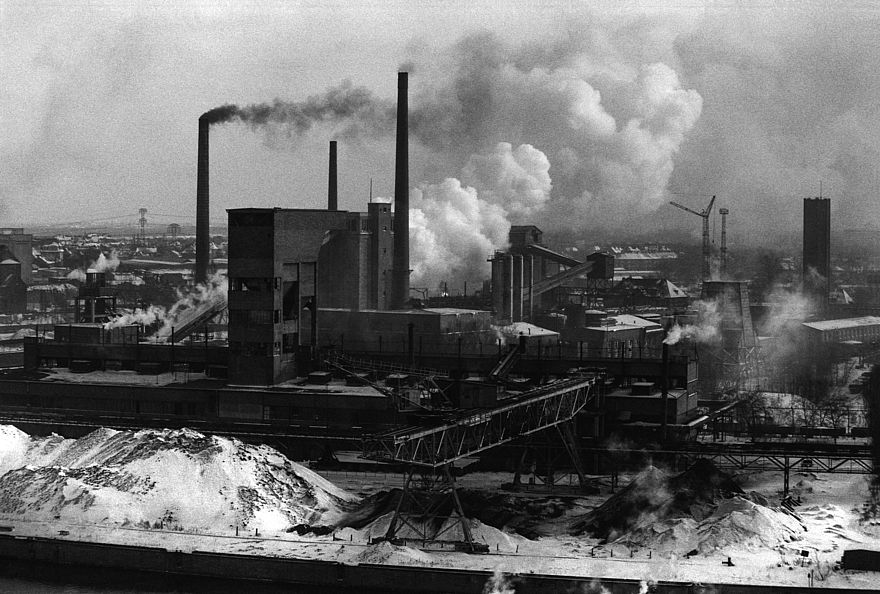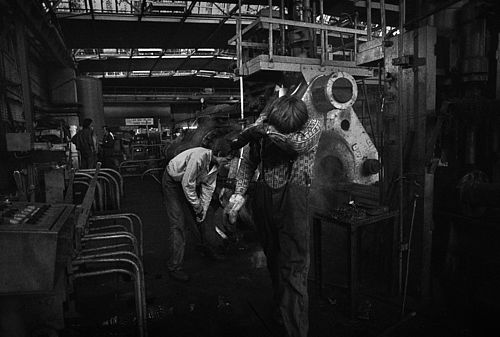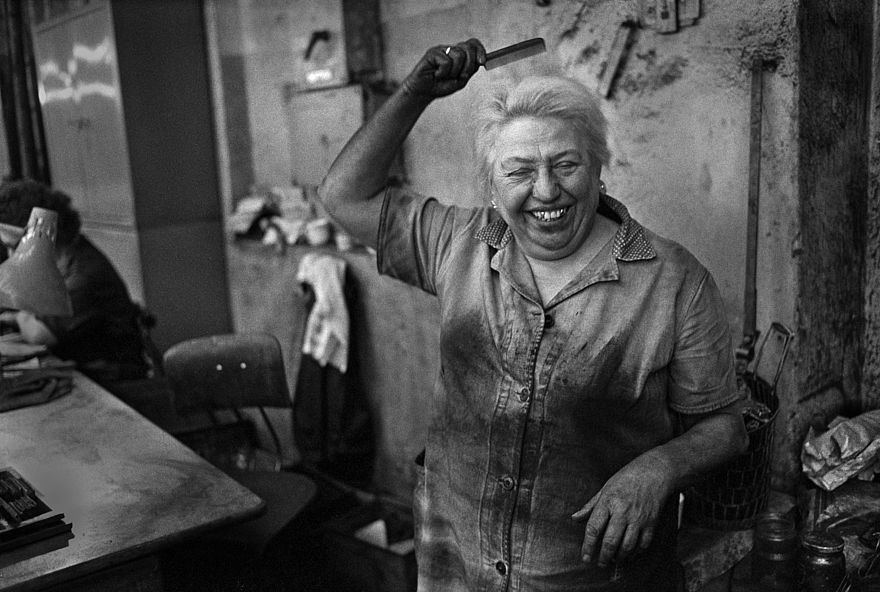Photographs of East Berlin Industrial Plants
Berlin before the fall of the wall is an important centre of industry. This applies in particular to the eastern part of the divided city. In both a political and industrial sense, East Berlin is the beating heart of the German Democratic Republic (GDR). A large number of Volkseigener Betriebe (or VEB, meaning Publicly Owned Enterprises) are spread across the city, including more than a dozen large companies with several thousand employees.

SDTB, Historisches Archiv / Foto: Günter Krawutschke
Portraits of East German Workers

SDTB, Historisches Archiv / Foto: Günter Krawutschke
Günter Krawutschke knows this world like few others. He has worked as a reporter and photographer for a Berlin publishing house since 1965. The industrial plants in the eastern part of the city are a focal point of his work. This frequently takes him to factories like Kabelwerk Oberspree (KWO), Metallhütten- und Halbzeugwerke (BMHW) or VEB Elektrokohle Lichtenberg (EKL). He is less interested in production processes or the company statistics and is actually fascinated by the people working there. In addition to official press appointments, he takes the time to study this world and capture it with his camera.
50 selected images provide unvarnished and sometimes intimate insight into this long-gone world: They document emotional moments and strong characters against the austere backdrop of arduous working life – photos that were usually excluded from public exhibitions during the GDR era.

SDTB, Historisches Archiv / Foto: Günter Krawutschke
30 Years since the Peaceful Revolution and the Fall of the Wall
In this role, Krawutschke unwittingly becomes the chronicler of a reality that only a few years later ceases to exist. Following the political upheaval of 1989– 90, there is radical economic change in East Germany. Today, the factory buildings in which he photographed workers and youth brigades are often Asian markets or gentrified lofts.
30 years since the Peaceful Revolution and the Fall of the Wall: This anniversary is a fitting occasion to use these photographs to commemorate the actual reality of work in the late GDR – beyond any propaganda.
Bis zum Bau der Mauer 1961 hatten circa 3,4 Millionen Menschen die DDR Richtung Westen verlassen. Der dadurch hervorgerufene Arbeitskräftemangel war noch bis in die 1980er Jahre zu spüren. Das Regime schloss aus diesem Grund Verträge mit anderen sozialistischen Staaten, um von dort gezielt Arbeitskräfte anzuwerben.
SDTB, Historisches Archiv / Foto: Günter Krawutschke
Günter Krawutschke erinnert sich: „Den Adam (wie Joseph Klimanel von seinen Kollegen genannt wurde) habe ich gebeten, sich vor die Tafel zu stellen. Ich fand das ganz witzig: er mit Bart und Mütze und der Lenin dahinter – ein Glücksfall.“
SDTB, Historisches Archiv / Foto: Günter Krawutschke
Anlässlich des Dienstjubiläums einer Kollegin hat sich eine Brigade des VEB Elektrokohle zu einer kleinen Feier versammelt.
SDTB, Historisches Archiv / Foto: Günter Krawutschke
Ein Arbeiter des VEB Kühlautomat Berlin gestaltet eine Wandzeitung anlässlich des VIII. Parteitags und des 25-jährigen Bestehens der Sozialistischen Einheitspartei Deutschlands (SED).
SDTB, Historisches Archiv / Foto: Günter Krawutschke
Drei Männer sitzen sehr entspannt in einer riesigen Werkhalle des Transformatorenwerks Oberschöneweide und spielen eine Runde Karten.
SDTB, Historisches Archiv / Foto: Günter Krawutschke
The Photographer
Günter Krawutschke was born 1940 in Staßfurt, Saxony-Anhalt. After secondary school and military service, he worked as an assistant cameraman at GDR television (DFF) in East Berlin. He was as a reporter and photographer for a Berlin publishing house between 1965 and 1992. Since then he has been a freelance photographer and designer.
While still working, he completed an apprenticeship as a photographer and then a Diplom degree at the Academy of Visual Arts Leipzig. He was a member of the Association of Fine Artists in the GDR. Besides industrial portraits, he focused in particular on architecture in the centre of Berlin – for instance by documenting the Spandauer Vorstadt, reconstruction of the New Synagogue on Oranienburger Straße in Berlin from 1988 to 1995, or the development of Friedrichstraße since 1990.
